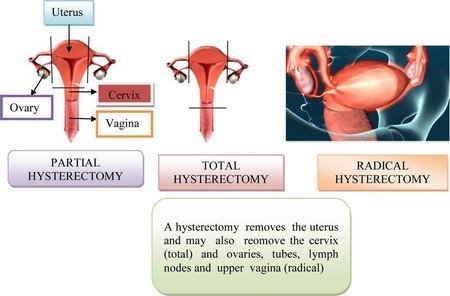When a woman’s cervix grows abnormally and forcefully enters other organs and tissues it becomes invasive and turns into cervical cancer. This, in turn, can further reach other vital organs like lungs, liver, vagina, bladder, etc. Cervical cancer takes years to develop and is equally fatal as any other type of cancer. It ranks fourth in the most common type of cancer women suffer worldwide. Hence, it is important to know about cervical cancer causes, symptoms, and treatment.

Causes of Cervical cancer
HPV infection:
The reason for Human papillomavirus infection (HPV) is the abnormal growth of cervical tissues. It can also lead to genital warts that can eventually turn into cancer. This is because genetic material found in high-risk subtypes HPV is generally found in cervical tissues affected with cancer or pre-cancer stage. HPV can also be one of the sources of tongue, vulva, vaginal, or anal cancer.
Smoking:
The hazardous chemicals in cigarettes react with the cervix cells and can develop into cancer over time. This is the reason why women who smoke are 2-5 times at a higher risk of cervical cancer as compared to women who do not.
Early sex or multiple partners:
Girls who lose their virginity before their first period or within a year from their first period (usually between the age of 14-16yrs) are at high risk of this cancer. This happens because their reproductive organs go through vital changes during this time and sex can increase the risk of infection during this phase.
Similarly, having multiple sex partners can also increase the risk of HPV infection, which can lead to this cancer.
High consumption of contraceptive pills:
Research states women who consume birth control pills regularly for five or more years are at a high risk of developing cervical cancer. The harmful chemicals in contraceptive pills deposited on the cervix tissues make it weak and invasive. Moreover, it reduces the use of condoms, which increases the risk of HPV infection.
Related posts:
Warning Signals of Ovarian Cancer and Precautions
Common signs of cancer in Women
Prevent Breast Cancer Risk Effectively
Symptoms:
Just like other types of cancer, cervical cancer can have no or very few symptoms until it reaches the last stage of cancer. However, some of the most common symptoms may include the following:
For early-stage:
- Unusual vaginal discharge
- Vaginal bleeding
- Bleeding after sexual intercourse
- Pelvic pain
- Bleeding between periods
- Post-menopause bleeding
For the advanced stage:
- Urine leakage from the vagina
- Fatigue
- Weight loss
- Leg pain or swollen legs
- Back pain
- Abnormal weight loss
- Bone fractures
- Kidney failure
In the above-mentioned symptoms, vaginal bleeding or any other abnormal bleeding always does not point to cervical cancer. The symptoms may be due to several other reasons like your fertility issues, hormonal problems, medical history, etc. However, if the symptoms are repetitive and worsen with time, do visit your doctor.
Treatment for cervical cancer
Cancer removal surgery:
Depending upon the size of the tumor and areas of cancer doctors perform certain surgeries usually in the early stage of cancer. Hysterectomy surgery is performed where the uterus is removed.
However, in younger women with small tumors, other surgeries such as trachelectomy are followed which preserve their fertility. In the case of advanced cervical cancer, pelvic exenteration is done, in which the uterus is removed along with various other affected organs.
Targeted therapy:
This therapy is ideal at an advanced stage of this type of cancer wherein certain drugs are given to the patient, which prevents the growth of cancer cells. These drugs target the tumor and prevent them from making new blood vessels, which hampers the growth of tumors thus preventing and controlling the growth of cancer.
Radiation therapy:
There are two types of radiation therapy; the first is external beam radiation while the second is brachytherapy. In external beam therapy, external sources of radiation are used whereas in brachytherapy radioactive sources are placed beside the tumor for a particular period.
Moreover, these two therapies are always done together and if they are performed in the last stage of cancer it is mostly combined with chemotherapy.
Chemotherapy:
Chemotherapy often goes with radiation therapy, depending on the various stages of cervical cancer. Besides, Cisplatin and 5-fluorouracil are common drugs in chemotherapy. Also, chemotherapy has many side effects such as hair loss, fatigue, mouth sores, nausea, vomiting, etc.
Ref:
https://www.medicinenet.com
https://www.webmd.com/cancer/cervical-cancer/cervical-cancer#2
https://www.cancercenter.com/cancer-types/cervical-cancer/symptoms




